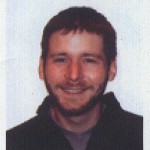Nucleic Acids Res. 2010 Jul 31. [Epub ahead of print]
The role of transcription factories-mediated interchromosomal contacts in the organization of nuclear architecture.
Dorier J, Stasiak A.
Center for Integrative Genomics, Faculty of Biology and Medicine, University of Lausanne, 1015-Lausanne, Switzerland.
Abstract: Using numerical simulations, we investigate the underlying physical effects responsible for the overall organization of chromosomal territories in interphase nuclei. In particular, we address the following three questions: (i) why are chromosomal territories with relatively high transcriptional activity on average, closer to the centre of cell’s nucleus than those with the lower activity? (ii) Why are actively transcribed genes usually located at the periphery of their chromosomal territories? (iii) Why are pair-wise contacts between active and inactive genes less frequent than those involving only active or only inactive genes? We show that transcription factories-mediated contacts between active genes belonging to different chromosomal territories are instrumental for all these features of nuclear organization to emerge spontaneously due to entropic effects arising when chromatin fibres are highly crowded.

 Julien Dorier first joined the CIG in Dr. Andrzej Stasiak‘s lab as a Civilist in October 2008 for 3 months. He was then hired as a FNS Senior Researcher from January 2009 until now. He is leaving the CIG at the end of September 2011.
Julien Dorier first joined the CIG in Dr. Andrzej Stasiak‘s lab as a Civilist in October 2008 for 3 months. He was then hired as a FNS Senior Researcher from January 2009 until now. He is leaving the CIG at the end of September 2011.

